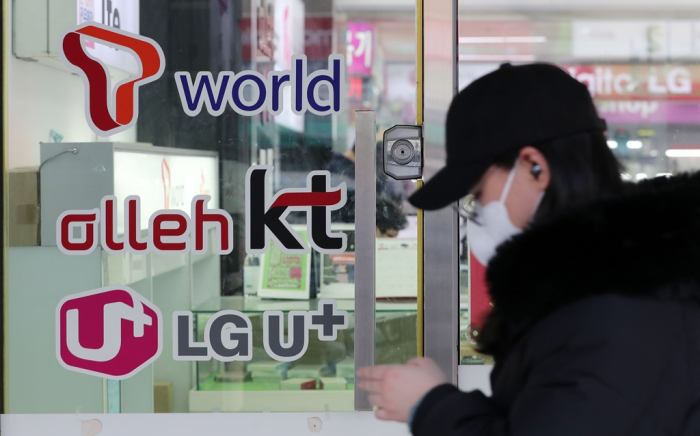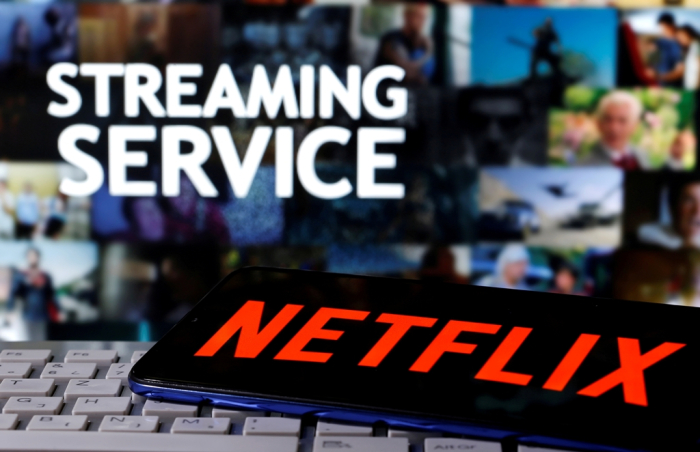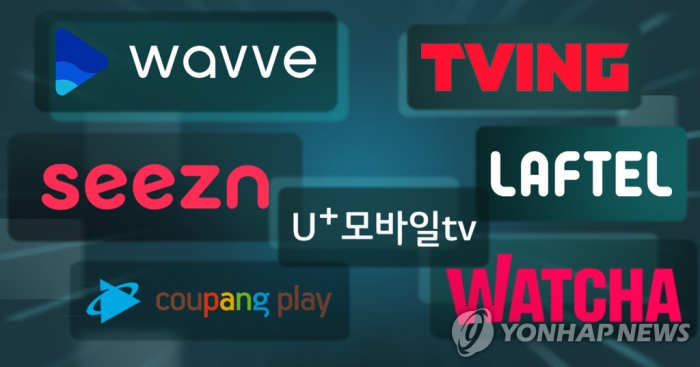Tech, Media & Telecom
Under siege by OTT players, Korean mobile carriers seek higher VOD sales
Viewers’ preference for OTTs may be inevitable, but VOD services could also be appealing, they say
By Aug 31, 2023 (Gmt+09:00)
3
Min read
Most Read
LG Chem to sell water filter business to Glenwood PE for $692 million


Kyobo Life poised to buy Japan’s SBI Group-owned savings bank


KT&G eyes overseas M&A after rejecting activist fund's offer


StockX in merger talks with Naver’s online reseller Kream


Mirae Asset to be named Korea Post’s core real estate fund operator



Once, video-on-demand (VOD) services over internet TV easily generated money for most telecommunications companies in South Korea.
Those days are gone, however, with the rise of home-grown over-the-top (OTT) operators and the onslaught of global players such as Netflix Inc.
Korea’s three mobile carriers – SK Telecom Co., KT Corp. and LG Uplus Corp. – are now seeking ways to take on OTT players by offering multi-package VOD services.
According to the Korea Communications Commission, the country’s top media regulator, sales from the telecom companies’ paid VOD services over Internet Protocol television (IPTV) peaked in 2018 at 659 billion won ($499 million).
Such sales revenue steadily declined to 641.2 billion won in 2019, 625.8 billion won in 2020 and 529.9 billion won in 2021.
No 2022 figures are yet available but industry watchers said the three mobile carriers’ VOD sales likely dropped further last year.

Analysts said Korean people are increasingly choosing local OTT operators such as Coupang Play and TVing as well as global players such as Netflix over VOD services, which require viewers to pay extra for every film and drama they watch over IPTV.
By contrast, OTT users can access most content, including movies, drama series and entertainment shows, without additional costs.
“If a new film is available on an IPTV, people don’t want to pay extra money to watch it. Rather, they wait for a week or so to see it on OTT,” said an industry official.
SHRINKING IPTV SUBSCRIBERS
According to the Ministry of Science and ICT, the number of paid subscribers to IPTV services stood at 36.25 million at the end of 2022, up a mere 0.67% from six months earlier. The growth rate was the slowest ever.

Instead, Korean people are opting to subscribe to multiple OTT services to enjoy a variety of entertainment content, industry officials said.
Netflix, already the dominant OTT player in Korea, is apparently poised to further distance itself from its money-losing local peers as well as VOD service providers.
During his visit to Seoul in April, Netflix Co-Chief Executive Ted Sarandos pledged to invest $2.5 billion in Korean content production over the next four years and offer cheaper subscription plans to woo penny-pinching younger viewers.
LG UPLUS UNVEILS NEW SUBSCRIPTION PLAN
LG Uplus, Korea’s third-largest mobile carrier, said on Thursday it is launching a new VOD product that allows its viewers unlimited access to 110,000 videos produced by local TV broadcasters.
With an extra fee of 8,800 won to the monthly 16,500 won U+tv Premium package, its subscribers can use this service, according to the company.

This package, bundling content VOD from major broadcasters, including KBS, MBC, SBS and JTBC, is the first of its kind in Korea, LG said. Previously, viewers had to subscribe to each broadcaster’s VOD packages for a fee of 8,800 won each.
SK Broadband Co., an SK Telecom affiliate, said it recently partnered with CJ CGV Co., Korea’s top multiplex cinema chain, to offer Btv Movie Combo, which offers its VOD service subscribers discounts on movie tickets.
KT is striving to secure VOD subscribers by focusing on kids’ content.
To make up for falling sales from their VOD services, Korea’s three mobile carriers are considering adopting addressable TV advertising more aggressively.
Addressable TV advertising is a type of targeted advertising that enables advertisers to customize the ads delivered to individual households while they are watching television.
It uses sophisticated data analytics and digital technology to segment audiences based on various factors such as demographics, behavior or geographical location, and deliver relevant and personalized ads to each viewer, enhancing the effectiveness and efficiency of TV advertising campaigns.
Write to Ji-Eun Jeong at jeong@hankyung.com
In-Soo Nam edited this article.
More to Read
-
 Content platformsA Goliath vs. Davids battle in the S.Korean OTT market
Content platformsA Goliath vs. Davids battle in the S.Korean OTT marketMay 22, 2023 (Gmt+09:00)
3 Min read -
 Content platformsNetflix to inject $2.5 bn in Korean drama series, movies over next 4 years
Content platformsNetflix to inject $2.5 bn in Korean drama series, movies over next 4 yearsApr 25, 2023 (Gmt+09:00)
2 Min read -
 Content platformsKorea’s homegrown OTT Watcha at crossroads amid dearth of cash
Content platformsKorea’s homegrown OTT Watcha at crossroads amid dearth of cashApr 16, 2023 (Gmt+09:00)
4 Min read -
 Mergers & AcquisitionsCJ’s TVing, KT’s Seezn set for merger to challenge OTT leader Netflix
Mergers & AcquisitionsCJ’s TVing, KT’s Seezn set for merger to challenge OTT leader NetflixJul 13, 2022 (Gmt+09:00)
4 Min read -
 EntertainmentTVing partners with Paramount Plus to challenge Netflix in Korea
EntertainmentTVing partners with Paramount Plus to challenge Netflix in KoreaJun 17, 2022 (Gmt+09:00)
3 Min read
Comment 0
LOG IN


